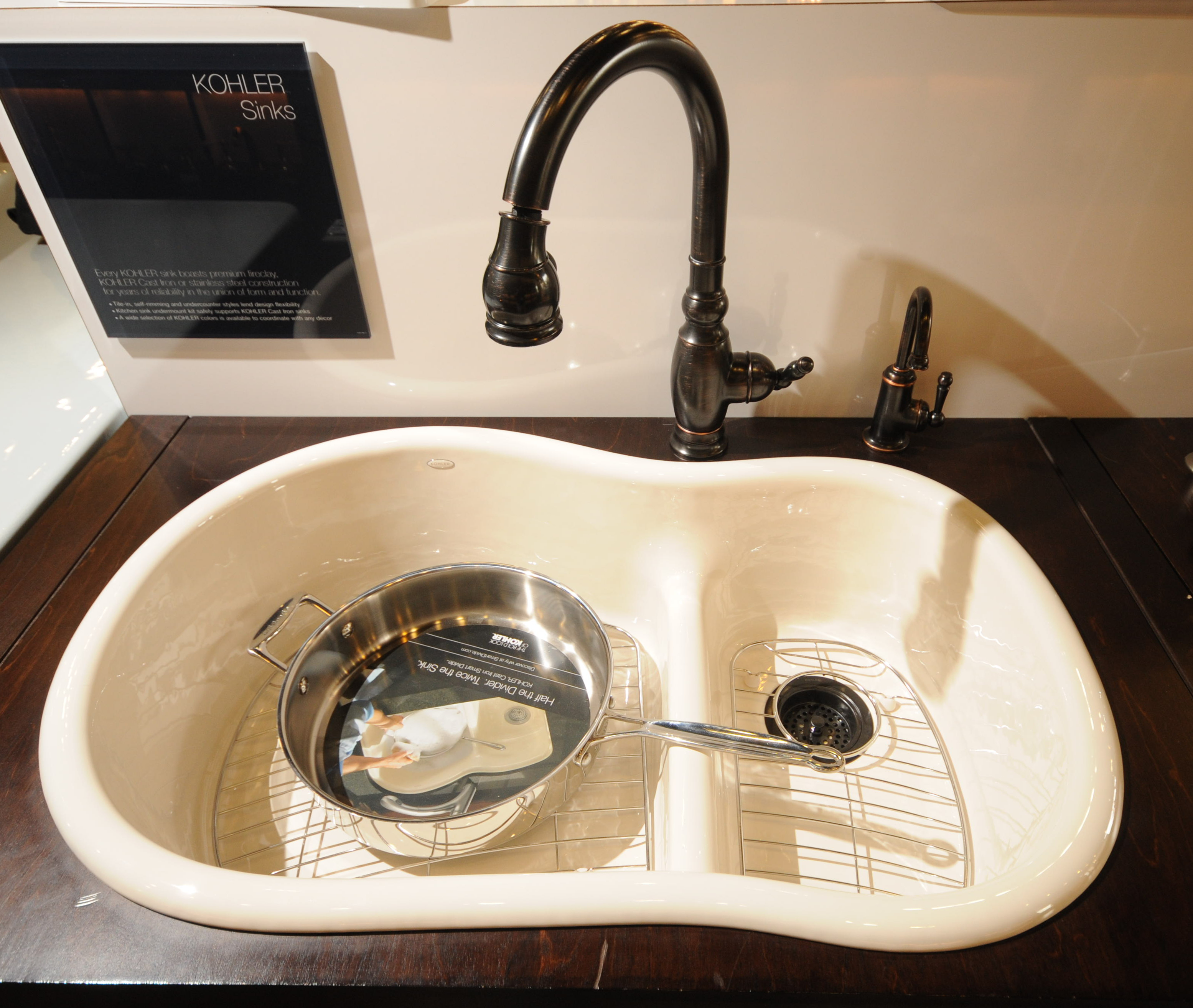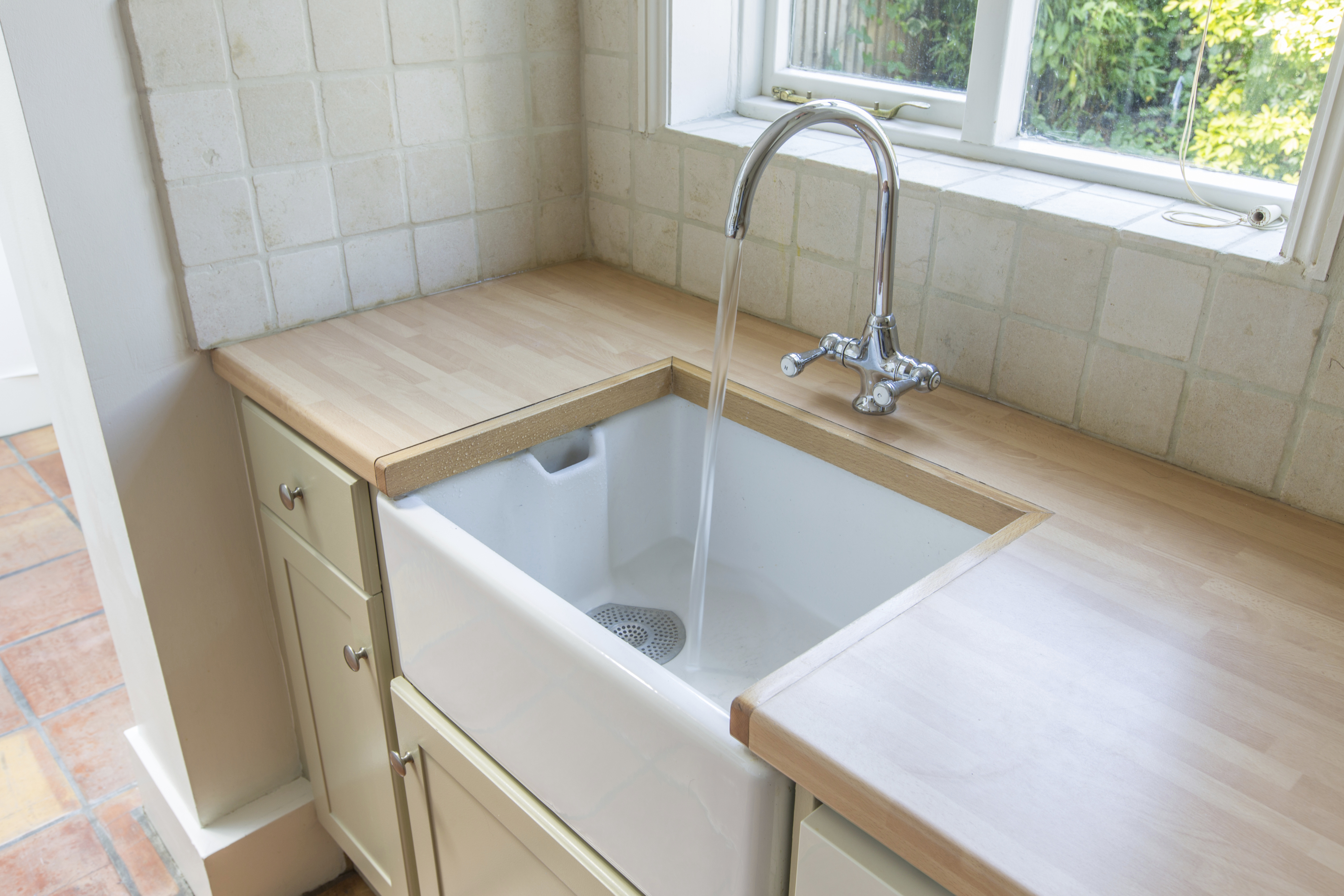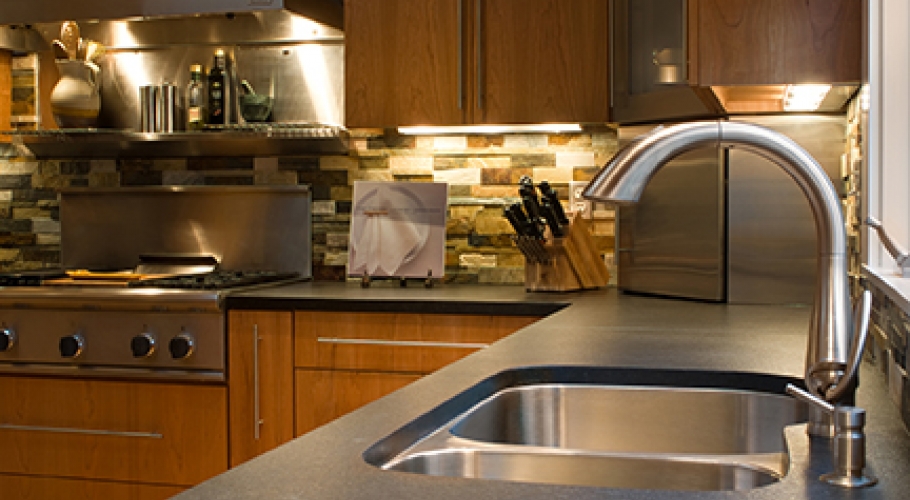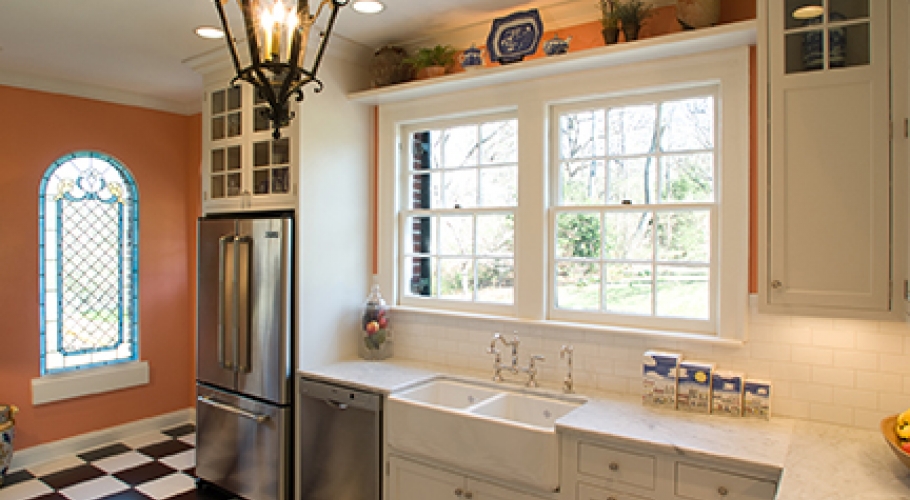 The Kohler Smart Divide sink, such as this model at Ferguson Enterprise on Amnicola Highway, features a shortened partition dividing the two sink basins. This accommodates larger pots and pans, cookie sheets or pans with long handles. First made in cast iron, now the line has expanded into stainless steel as well.
The Kohler Smart Divide sink, such as this model at Ferguson Enterprise on Amnicola Highway, features a shortened partition dividing the two sink basins. This accommodates larger pots and pans, cookie sheets or pans with long handles. First made in cast iron, now the line has expanded into stainless steel as well.It's arguably the most-used feature of any kitchen, but one given little thought when purchased.
From prepping food through cleanup after the meal, washing hands or fine china, the kitchen sink is where the action happens. That's why consumers should research styles and materials available before buying a sink so it performs well in the long haul.
"The kitchen sink is the focal point of the kitchen," says Allen O'Neal, Kohler sales executive for East Tennessee.
He finds that common mistakes among sink shoppers, who are either updating or building homes, fall into three categories: Not being informed on the variety of sinks available, confusion about stainless steel, and thinking that cast iron sinks are those of their grandparents or great-grandparents.
"People think all stainless steel is created equal, and that's not the case," he says. "There are several thicknesses, and you want to buy the thicker gauge. The rule is: The higher the gauge, the thinner the stainless steel. You don't want anything less than an 18 gauge. You don't want to go 19 to 22; they will not perform well over time."
O'Neal says shoppers watching their budgets may choose a thinner stainless based on price point.
"They have that mounted in their new granite kitchen only to find six months down the road that the sink is dented and showing scratches. Again, it goes back to knowledge about what is available," O'Neal says.
As for cast iron, it now comes in a spectrum of colors, he says, and is guaranteed not to chip or crack - an improvement over the cast-iron sinks of just a decade ago.
Jackie Howard, owner of Scarlett's Cabinetry and a bath/kitchen designer, shared some fundamentals on styles and materials in today's kitchen sinks:
STYLES
One Large, Single Sink: Howard says one, large, deep basin is the farmhouse style, although most homeowners consider a farmhouse to be the apron-front sink.
"I love to design a kitchen that has two separate sinks: a main sink and additional prep sink. This allows a homeowner to purchase a large farmhouse sink as long as there is a second smaller sink (often placed in the island)."
Pro: Easy to wash cookie sheets or pots that won't fit in a dishwasher. Also, they are available in stainless, porcelain and cast iron.
Con: Can't rinse and peel veggies while soaking a casserole dish. Doing prep work and cleaning duty at the same time will usually require purchase of accessories such as rinse baskets.
The 60-40 Divided Sink: This divided sink is the style Howard recommends to customers. In this design, one basin averages 18 inches in width and the other 14 inches.
The Kohler Smart Divide features a partition between the two basins that may be as short as 3 inches but never higher than half the depth of the sink.
Pro: The 60-40 sink allows one large sink for dish washing, and a smaller one for veggie prep, but you can still fit a baking sheet or large pot with handles across both basins for cleaning.
Con: The smaller basin is fairly limited to veggie prep and small jobs.
Two Basins Of Equal Size: Howard says this style is usually the choice of an older couple who are very traditional. "If you still hand-wash your dishes, you want this," she says.
Pro: This style is usually less expensive because it is not in demand. Since most women rely on dishwashers, two basins are not as necessary as they were in mom's day.
Con: Large pans and trays won't fit.
Three Basins: "These were popular 10 years ago," says Howard. "This sink features two basins with a center space for a garbage disposal.
Pro: The three-way allows a garbage disposal in a narrow center basin flanked by two, equally large basins, so the garbage disposal can be used independently of the sink. And there will be no drips from the sink across the floor to a separate garbage can.
Con: Howard says mounting this basin requires a 42-inch-wide base cabinet instead of the usual 36-inch cabinet.
Sink with rounded sides: Frequently found in island prep sinks.
Pro: Many homeowners consider a curved sink easier to clean than one with edges.
Con: Doesn't drain as well, says Howard.
MATERIALS
Stainless Steel: "Stainless steel sinks are timeless. I recommend this to most of our clients, especially if you can buy an undermount sink to go in granite or quartz countertops," says Howard. She recommends 16- to 18-gauge stainless as a good range, adding that big-box stores usually carry a 20-gauge, which is less expensive for remodelers but may not hold up as well.
Pro: Ease of cleaning
Con: Can scratch. Howard says she recommends all homeowners buy metal grids with rubber feet designed to fit in stainless sinks and protect them from scratches.
Porcelain: The traditional material complements kitchens with a vintage style.
"If someone wants the porcelain look, I'll suggest they consider cast-iron, which is more durable and also comes in a wide range of colors," says Howard.
Pro: Available in a wide range of colors.
Con: Can chip, leaving a black mark; metal pans can also leave black marks or scuffs that are difficult to remove.
Natural Stone: "Typically, we see this in farmhouse and apron-front sinks," says Howard.
Pro: Natural stone - such as marble, limestone, soapstone - can match the countertop; give a kitchen an authentic period look or a sleek contemporary look.
Con: Costly material that can scratch and chip. Special cleaning products may be required.
Contact Susan Pierce at spierce@timesfreepress.com or 423-757-6284.



